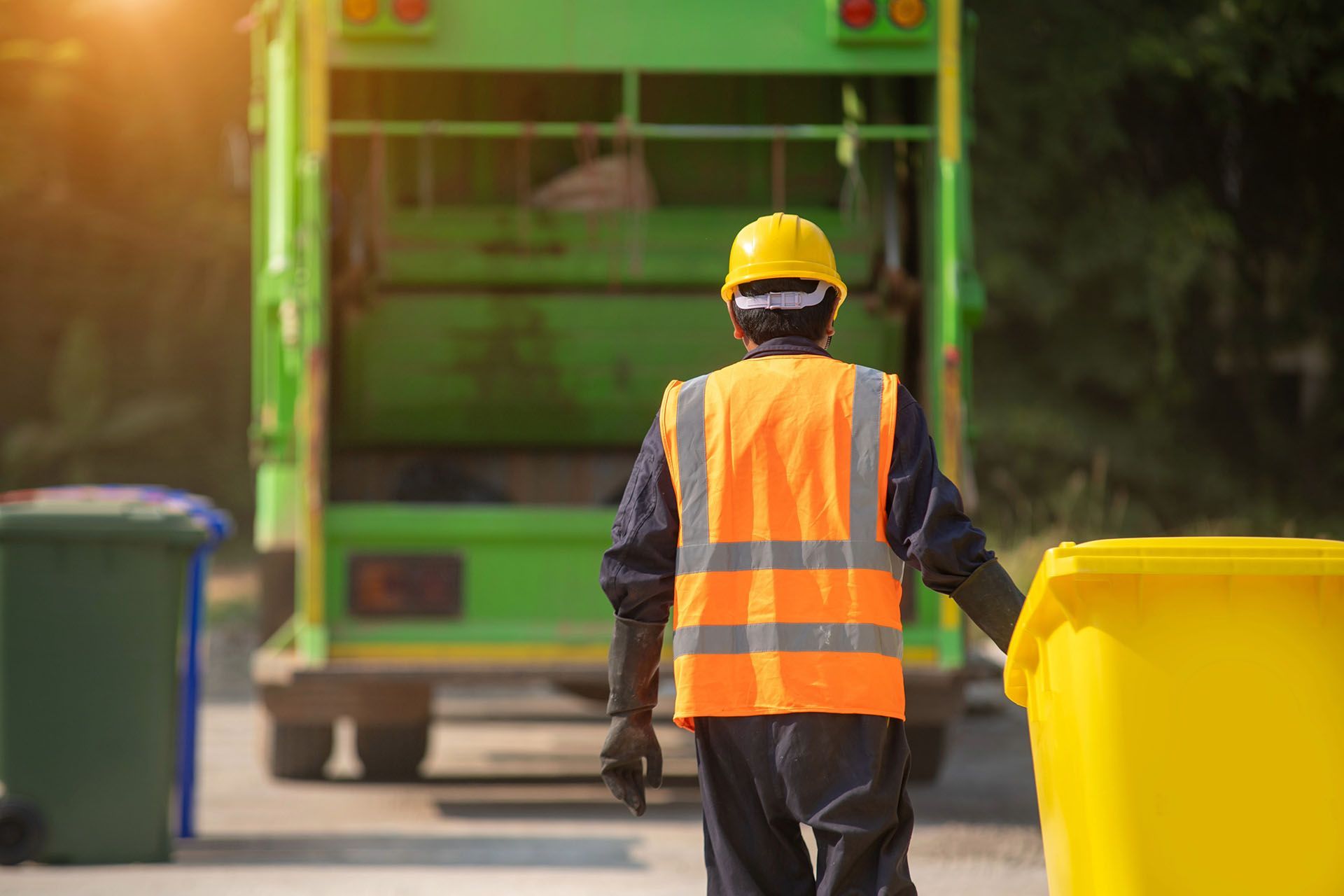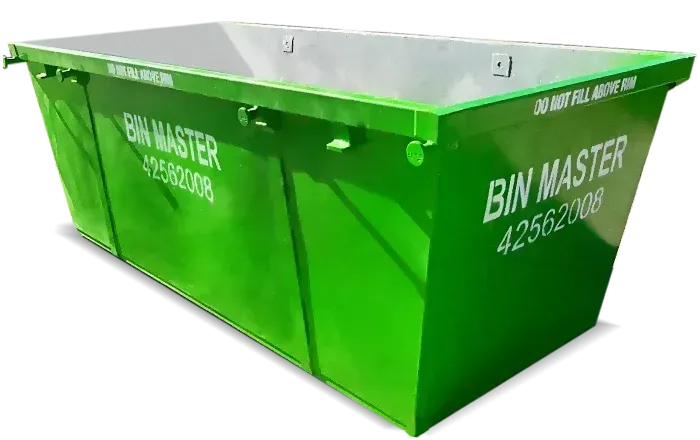Types of Rubbish in NSW: A Look at the Region's Waste Classification & Disposal
Ever stood at the bin with an empty pizza box in hand, wondering if it belongs in recycling, general waste, or even green waste? That small moment of hesitation happens in households and businesses across New South Wales every day.
In NSW, rubbish is not just “stuff to throw away” but carefully defined under state law so it can be managed responsibly. Having a good understanding of the different types of rubbish and how they are disposed of helps households and businesses make better choices about bins, treatment, and recovery for reuse.
This guide explores the six types of waste recognised under environmental law, the four main disposal methods, and why proper classification is central to a circular economy.
What Are the 6 Types of Waste?
The NSW Environment Protection Authority (EPA) has clear rules for classifying waste under the Protection of the Environment Operations Act 1997. The EPA’s Waste Classification Guidelines break rubbish into six distinct categories. These classifications are critical for making sure waste is handled in the right way.
1. Special Waste
This category covers waste that requires special care due to its unique risks. Examples include asbestos, clinical and related waste, tyres, and aerosol cans, which can be hazardous if punctured or exposed to heat. These materials may go to landfill, but only under strict controls. Handling often requires protective gear, sealed packaging, and disposal at licenced facilities. For instance, asbestos must be double-wrapped and transported by approved carriers to prevent fibres from being released.
2. Liquid Waste
Liquid waste is free-flowing or can be poured, and includes substances such as wastewater, oils, solvents, paints, sludges, and natural liquid waste like stormwater runoff or animal effluent. Because it can leak and contaminate soil or waterways, it cannot be disposed of in normal solid waste facilities. Liquid waste often needs treatment, recycling, or specialised disposal services.
3. Hazardous Waste
Hazardous waste contains chemicals or materials that are toxic, flammable, corrosive, or otherwise dangerous to humans and the environment. This might include lead-contaminated soil, chemical containers, pesticides, or laboratory waste. Hazardous waste usually requires pre-treatment before it can be safely disposed of, and it is strictly regulated to prevent harm. If mishandled, it can create serious health risks for workers, communities, and ecosystems, which is why proper disposal is highly encouraged.
4. Restricted Solid Waste
This type of waste is more contaminated than general solid waste but not as risky as hazardous waste. Restricted solid waste can include soil with moderate levels of contamination, certain industrial by-products, and residues from manufacturing processes. It must be placed in facilities with higher environmental controls to prevent pollutants from leaching into the surrounding land.
5. General Solid Waste (Putrescible)
Putrescible waste is organic rubbish that breaks down quickly, such as food scraps, garden waste, and animal by-products. Because it decomposes, it can produce odours, attract pests, and release methane in landfill. NSW councils are increasingly focusing on diverting putrescible waste into FOGO (Food Organics and Garden Organics) programs, where it can be composted instead of buried.
6. General Solid Waste (Non-Putrescible)
This covers materials that do not readily decompose. Examples include glass, plastics, paper, cardboard, metals, bricks, ceramics, concrete, and electronic waste such as outdated computers or appliances. This also includes electrical waste like old cables, appliances, and devices that should be recycled responsibly. Much of this is considered recyclable waste, which is why separating these items into the correct bin is so important.
Why Proper Waste Classification Matters

These six categories are more than just labels. They guide how rubbish should be handled, transported, and treated. The benefits of proper waste classification include:
- Protecting health and the environment – hazardous materials and liquid waste can be toxic if mismanaged, while food waste and other organics in landfill create harmful greenhouse gases.
- Supporting recycling and resource recovery – correctly identifying recyclable materials such as plastic waste, glass, and metals means they can be recovered and made into new products instead of ending up in landfill.
- Legal compliance – businesses that misclassify waste can face hefty penalties. The EPA requires that waste be properly assessed before disposal.
- Efficient waste management – by knowing exactly what types of rubbish are being dealt with, facilities can plan the safest and most cost-effective way to manage it.
- Building a circular economy mindset – when households and businesses understand the different types of rubbish, they are more likely to separate waste correctly, reduce contamination, and improve recycling outcomes.
What Are the 4 Methods of Proper Waste Disposal?
Classifying rubbish is only part of the story. Once identified, waste must be disposed of or processed in ways that minimise harm and make the most of available resources. In NSW, four main disposal methods are used. These apply across different waste streams, including household waste, food waste, plastic waste, medical waste, industrial waste, and construction and demolition debris.
1. Landfill
Landfill is the most common disposal method for landfill waste that cannot be recycled, composted, or otherwise treated. Modern landfills are highly engineered, with liners and leachate collection systems to prevent contamination of groundwater. Gas capture systems may also be installed to collect methane, which can then be used to generate electricity. While landfill remains necessary, it is considered the least preferred option in the “waste hierarchy” due to its environmental impact and the limited space available. Items such as construction and demolition debris and certain industrial waste often end up in landfill when recovery is not practical.
2. Incineration (Waste-to-Energy)
Incineration involves burning waste at very high temperatures to reduce its volume. Modern waste-to-energy facilities also generate power or heat from the process, turning rubbish into a resource. However, incineration is controversial. Critics argue it may discourage recycling and create air pollution, while supporters point to its ability to reduce landfill reliance and produce energy. In NSW, waste-to-energy is still a developing industry, with strict regulations around emissions. Some medical waste and hazardous industrial waste are treated through incineration because of the risks they pose if landfilled.
3. Recycling
Recycling is central to NSW’s waste management strategy. Materials such as glass, aluminium, steel, cardboard, paper, and many plastics can be collected in a recycling bin, processed, and turned into new products. Certain construction debris, such as bricks, concrete, and metals, can also be recycled to reduce landfill use. Recycling conserves raw materials, reduces energy use, and cuts down greenhouse gas emissions. NSW has also introduced initiatives such as the Return and Earn container deposit scheme, which has dramatically increased bottle and can recycling rates. Separating plastic waste and recyclable solid household waste correctly ensures these materials are recovered instead of being lost to landfill.
4. Composting (Including FOGO)
Composting turns organic waste into nutrient-rich soil improver. Across NSW, more councils are rolling out FOGO bins to separate food scraps and garden clippings from general rubbish. By composting this material instead of sending it to landfill, emissions are reduced and the resulting compost benefits farms, parks, and gardens. The state government has set a goal of making FOGO collection universal across NSW by 2030. Food waste is the main focus of these programs, but some garden and household waste streams also contribute to composting outcomes.
NSW’s Push Towards a Circular Economy
The NSW Government’s Waste and Sustainable Materials Strategy 2041 sets ambitious targets for reducing waste and moving towards a circular economy. Instead of treating rubbish as something to be disposed of, the circular model sees waste as a resource that can be recovered, reused, and fed back into the economy.
Some of the key targets include:
- Phasing out problematic plastics.
- Diverting more organic waste from landfill through the expansion of FOGO.
- Increasing recycling rates across municipal, commercial, and construction waste streams.
- Reducing overall waste generation per person.
This shift aims to conserve resources, reduce greenhouse gas emissions, and extend the life of NSW’s landfills.
Practical Steps for Households and Businesses
Understanding the six types of rubbish and four proper waste disposal methods is useful, but what can individuals and organisations do in practice?
- Check your council’s bin guide – different councils have slightly different rules about what goes into red, yellow, green, or purple-lidded bins.
- Separate recyclables properly – rinse containers, keep items loose (not bagged), and avoid contamination that can ruin recycling loads.
- Consider skip bin hire for larger clean-ups – whether it’s a home renovation, spring clean, or business project, hiring a skip bin makes it easier to manage bulk waste responsibly and sort materials for recycling.
- Use drop-off programs – hazardous items such as paint, batteries, chemicals, and e-waste often have dedicated collection days or drop-off centres.
- Reduce waste at the source – choose products with minimal packaging, compost at home if possible, and support businesses that use recycled materials.
- For businesses – ensure a waste classification assessment is carried out if handling materials that could fall into restricted, hazardous, or liquid categories.
Conclusion
Waste is not a single, simple problem. In NSW, it is divided into six categories: special, liquid, hazardous, restricted solid, general solid (putrescible), and general solid (non-putrescible). These types of rubbish are defined so they can be managed in a way that reduces harm and maximises resource recovery. Once classified, waste can be managed through four main methods: landfill, incineration, recycling, and composting.
By having a more sound understanding of how rubbish is defined and treated locally, households and businesses can make informed decisions that protect the environment and contribute to a circular economy. From separating FOGO waste at home and placing recyclables in the correct recycling bin to responsibly disposing of hazardous materials and arranging proper rubbish removal for bulk loads, every step counts towards a cleaner and more sustainable NSW.

Bin Master Skip Bins offers a wide range of skip bin and skip bag sizes for different waste removal needs at great rates. Whether it's household waste, construction debris, or green waste, we have a suitable skip solution available for you.

